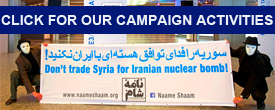Naame Shaam hands report about ‘sectarian cleansing’ in Syria to ICC Prosecutor
International Criminal Court should investigate role of Iranian, Syrian and Lebanese leaders in war crimes
The Hague, 23 April 2015 – A Naame Shaam (1) representative today handed to the Office of the International Criminal Court Prosecutor in The Hague a new Naame Shaam report entitled “Silent Sectarian Cleansing: Iranian Role in Mass Demolitions and Population Transfers in Syria.”
The report, which will be released publicly in mid-May, focuses on two specific war crimes and crimes against humanity committed repeatedly in certain parts of Syria since March 2011, namely the unlawful destruction and appropriation of civilian property and the forcible displacement and transfer of civilian population.
These two types of international crimes constitute what appears to be a state policy of sectarian cleansing.
The policy appears to be driven by a combination of mafia-style war profiteering linked to the inner circle of the Syrian regime and a Shiatisation programme pushed and financed by the Iranian regime.
The result is changing both the political alliances and the demographic composition of these areas in Syria.
Shiar Youssef, the head of Naame Shaam’s Advocacy and Research team, said: “The planned destruction and reconstruction of certain areas in Syria appears to have been intended to not only punish the communities supporting the revolution or the armed rebels, the majority of which happened to be Sunni, but also to ‘cleanse’ those areas of all ‘unwanted elements’ and prevent them from returning home in the future.”
“At least in some areas in Syria, it appears that the war has been utilised as an excuse or a cover to implement long-term or pre-existing plans of sectarian cleansing and demographic change. Iranian officials, military commanders and businessmen appear to be at the heart of these plans.”(2)
Fouad Hamdan, Naame Shaam’s Campaign Director, said: “We urge the ICC Prosecutor to initiate an investigation into these crimes of her own initiative (proprio motu), on the basis of Naame Shaam’s report and other available relevant information.”(3)
“We also appeal to the ICC Prosecutor to accept an offer made public in March 2015 by the UN Independent International Commission of Inquiry on the Syrian Arab Republic (4) to share the names and details of the Commission’s ‘secret lists’ of suspects with any prosecution authorities preparing cases about war crimes and crimes against humanity committed in Syria,” Hamdan added.
Notes for editors:
1. Naame Shaam is a group of Iranian, Syrian and Lebanese activists and citizen-journalists that focuses on uncovering the role of the Iranian regime in Syria. Naame Shaam (نامه شام) means “Letter from Syria” in Persian. For more details about the group and its activities, see www.naameshaam.org.
Naame Shaam is supported by the Netherlands-based Rule of Law Foundation, www.lawrules.org.
2. To visualize the Iranian occupation of Syria, earlier this month Naame Shaam released a photomontage of a Syrian bank note with the counterfeit of General Soleimani, together with former Syrian President Hafez al-Assad. You can find the mock bank note here.
3. The ‘Legal Framework’ provided in the second chapter of the report, “Silent Sectarian Cleansing: Iranian Role in Mass Demolitions and Population Transfers in Syria,” argues that the crimes discussed in the report clearly fall within the jurisdiction of the ICC. The authors therefore urge the ICC prosecutor to use the powers bestowed upon her by the Rome Statute to initiate an international investigation into the crimes, even if this were to be vetoed by Russia and China in the Security Council.
4. For more information about the UN Independent International Commission of Inquiry on the Syrian Arab Republic in Geneva, Switzerland, see here.
5. In November 2014, Naame Shaam published an in-depth report on the role of the Iranian regime in the ongoing war in Syria, “Iran in Syria: From an Ally of the Regime to an Occupying Force”. See the full report here.
This report provides numerous examples and case studies of human rights violations, war crimes and crimes against humanity committed in Syria by Iranian-controlled militias and forces, including the ‘crisis cell’ assassination in July 2012 and the Ghouta chemical massacre near Damascus in August 2013. It also highlights ways of bringing possible lawsuits against Iranian regime officials, such as Gen. Qassem Soleimani, the commander-in-chief of Sepah Qods, the foreign arm of Sepah Pasdaran (Iranian Revolutionary Guards).
The authors argue that there is sufficient evidence for the ICC to try the military and political leadership of Iran for complicity in various crimes committed in Syria. This ranges from inciting, endorsing and adopting specific criminal and terrorist acts to aiding and abetting war crimes and crimes against humanity.
The 2014 report also presents a legal case for treating the war in Syria as an international conflict that involves a foreign occupation by the Iranian regime and its militias and a liberation struggle by Syrian people against this foreign occupation, as defined by the 1907 Hague Regulations and the Fourth Geneva Convention of 1949.
 English
English  فارسی
فارسی  العربية
العربية 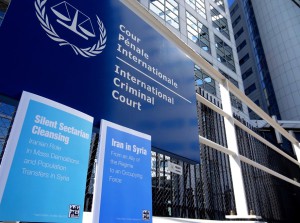
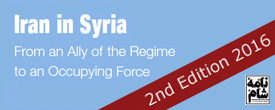
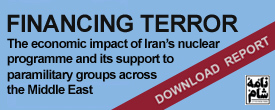
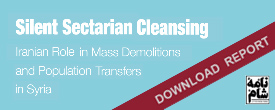
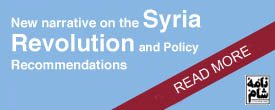

 On Twitter
On Twitter